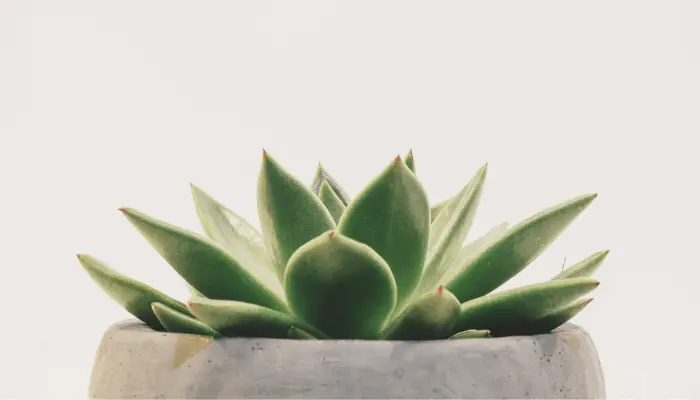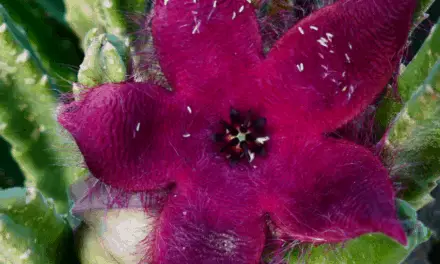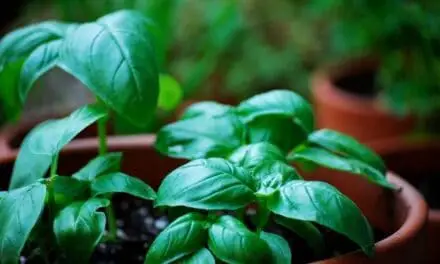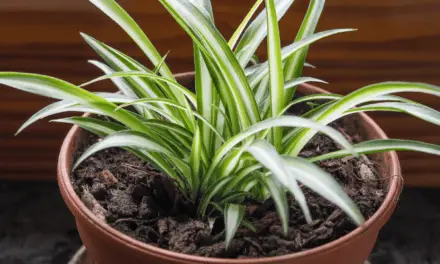Due to their special water holding capabilities, succulents have evolved to be drought resistant plants that are ideal for anyone new to gardening or looking after houseplants.
As our climate warms and the incidence of drought becomes more commonplace, it’s unsurprising to see succulents becoming more of a feature of our homes and gardens.
But the name succulent doesn’t exactly bring forth an image of a beautiful flowering plant.
So where does the name ‘succulent’ come from and why do we use it to describe these beautiful plant species?
Table of Contents
Why Are Succulents Called Succulents?
The word succulent is derived from the Latin word “sucus,” which means sap or juice. Since succulent plants store much more water in their stems or leaves compared to other plants, they can be seen as more succulent and that is where they get their name from.
What Exactly Is A succulent?

Succulents are plants that have fleshy, thickened, and engorged leaves, stems, or roots.
Because they store water, they do well in dry areas with limited water supplies.
They are described as drought-resistant since it takes so little water for them to survive.
With their low rainfall and high temperatures, deserts are home to many succulents, but succulents can also thrive in your home garden, in a terrarium, or just as a potted houseplant indoors.
Unlike some of their high-maintenance indoor counterparts, succulents are forgiving if you neglect them all together for a while.
Succulents are strong, sturdy, and resilient plants, tough enough to survive harsh desert climates.
Their leaves usually feel firm to the touch and have a swollen or juicy appearance, and that is why these plants are called succulents.
Aloe vera, one of the most well known and common succulents, is a perfect example of this.
Related Article: Is A Succulent A Desert Plant?
Succulents Come In All Shapes And Sizes
Some are large, some small, some with thick, rounded leaves, and some have long, pointed leaves.
Some succulents flower, and others do not.
The flowering varieties are vastly different from one another, but all are beautiful and unique.
Sadly, a few succulents only bloom one time, dying after they have produced their first bloom.
Caring For Succulents, Indoors, And Outdoors
Now that we know why succulents are called succulents, let’s take a look at how you care for these beautiful plants.
Succulents are ideal houseplants for their unique beauty.
And it certainly doesn’t hurt that they are easy to care for.
When keeping succulents indoors, look for an area with good light inside your home, preferably near a south or east-facing window for your succulents.
They won’t be as healthy when kept in a dark space.
Soil And Potting Requirements
Choose a container that has adequate drainage because they can’t tolerate overly moist soil.
Speaking of soil, a mix of half sand, half potting soil will be similar to the sandy soil they’d have in their natural settings, so start with that.
Related Article: Do Succulents Bloom All Year?
Watering Your Succulent
Remember that succulents act like reservoirs, storing water to hold it over for a long time.
Overwatering them is the fastest way to kill them.
You can tell when your succulent needs watering when the leaves pucker or shrink, or when the leaves lose their shiny or waxy appearance and look dull instead.
You can also test the soil around your succulent and if it feels completely dry, then it might be time for a watering.
And in general you should let the soil completely dry out before watering your succulent again.
Most succulents will need to be watered once every 2 to 4 weeks, but do take the time to check the specific requirements for the succulent you own.
Keeping Your Succulent Outdoors
If you live in a fairly hot and dry area that gets little rainfall, you can probably plant your succulents outdoors and watch them flourish.
Whether indoors or out, the secret is to limit the amount of water they receive and make sure they are not in moist or wet soil.
Some people leave their succulents in pots or planters rather than planting directly into the ground so they can be moved outdoors when it’s warm and dry and taken back into the house during rainy or snowy days.
Are Succulents Also Called Cacti?
While it’s common to hear people use the words interchangeably, the plants do have differences.
Every cactus is also a succulent, but not every succulent is a cactus.
What are the differences?
The term “succulents” describes a broad group of plants represented in several different botanical families.
The word “cactus,” on the other hand, denotes a botanical family.
There are two primary differences, making it easy to discern if you’re looking at a cactus or another succulent.
First, cactus plants usually have very few leaves, while most have none at all.
Succulents, on the other hand, have a lot of leaves that are the main aesthetic feature of the plants.
Cacti have areoles, or modified buds, from which the spines that cacti are famous for usually protrude.
The areoles are small lumps or bumps that look like little cushions or fluffy cotton structures on the plants’ bodies, giving them the prickly appearance that identifies them as a type of cactus.
Succulents Are Juicy – That’s Why They’re Called Succulents
Since the very name identifies these plants as sappy and juicy, be grateful that your succulents can absorb and retain water without the need for too much of your time or attention.
They can make great additions to your gardens and lovely house plants for your home.
Even if you don’t have a green thumb, give succulents a try.
They are resilient and forgiving, and some can produce beautiful vibrant flowers several times per year.




